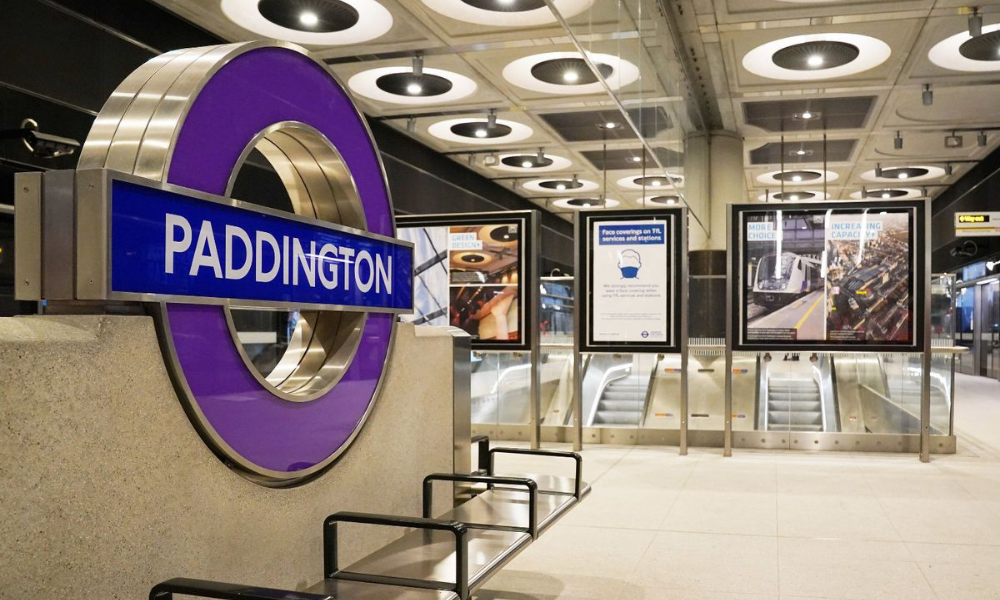
The opening of the world’s first metro system in London in 1863 was a chaotic event: steam in the tunnels obscured signals and choked drivers, the gas lighting frightened travellers — and “there were so many anxious passengers trying to get on board, that there were fights for seats”, according to the Penny Gazette.
Nearly 160 years later, the British capital is hoping for a smoother launch this week of the newest 100km addition to its transport network: the £19bn Crossrail train line, designed to carry tens of millions of passengers between the west and east of London.
Designed to halve journey times, and bring the capital’s four airports together with just one interchange, the new Elizabeth Line will bring an additional 1.5mn people to within 45 minutes of central London when it fully opens this time next year.
Even four years late and £4bn over budget, the project is perhaps as much of an engineering triumph as its first predecessor, the Metropolitan Railway, which fittingly also linked Paddington and Farringdon stations.
In the 13 years since construction began, builders have dodged the existing London Underground lines, medieval plague pits, Victorian sewage pipes, Tudor castle foundations and a lattice of gas and telecoms pipes buried in often porous honeycomb soil beneath one of the world’s oldest cities.
The irony is that its engineers navigated all those hurdles only for the project to be delayed, by among other things, that bane of 21st century life — troubles with the IT system.
Crossrail is finally arriving, but it does so at an inauspicious moment — when the business case for mega-sized urban infrastructure projects is facing unprecedented uncertainty from shifting ways of working and new technologies that had set in even prior to the pandemic.
“Crossrail was built for a completely different world,” says Tony Travers, a government expert at the London School of Economics. “The case for it was that it would drive ever greater employment and economic activity in central and inner London and, for a time, that logic is on pause.”
| Revealed In 2022 Best Day Trading Strategies for Beginners |
Cities as diverse as Paris, Auckland, and Ho Chi Minh City are pressing forward with building new urban metro systems, while the government in Malta unveiled a proposal for a new island-wide metro last year.
But these come as improved cycling infrastructure, disruptive technologies such as ride-hailing apps and new patterns of work are already changing travel patterns worldwide.
Even before the disruption of Covid-19, passenger numbers on urban transport systems were stagnating in five key global cities, including the British capital, while their populations and economies continued to grow, according to a Financial Times analysis of official data.
In London, journeys fell 3.5 per cent year-on-year in 2019 to the lowest level since 2014. The numbers rebounded last year after a pandemic cliff-edge drop but are still only at 65-70 per cent of the pre-Covid level.
In Paris, where mayor Anne Hidalgo has tried to rein in the number of cars and invested in cycle paths, metro journeys have mostly flatlined over the past decade.
In 2019, they fell 4 per cent from the previous year, reaching a 10-year-low. Hong Kong saw a similar pattern, with a 6.1 per cent decrease in 2019. Meanwhile, in New York, subway rides fell 3.7 per cent in 2019 from their peak
“This is a trend with significant consequences,” says Alexander Jan, former chief economist at engineering giant Arup and chief economic adviser to the London Property Alliance, who has been tracking the data.
“The pressure on household incomes, the Deliveroo culture, as well as changing work and leisure patterns all will have played a part,” he says, adding that the decline in bus use is even stronger in some cities.
Hot Topics
Asian Markets Up After Wall Street Battering Over Recession Fears
Biden Has An Eye On China As He Heads To South Korea
Oil Prices Climb On Hopes Of China Demand Recovery
The opening of Crossrail is the latest chapter in London’s evolution as an economic and cultural hub for the UK and the world. But changing passenger habits raise questions about the future and financing of new urban rail projects even as the threat of climate change makes the shift from cars more pressing than ever. Source: Financial Times...